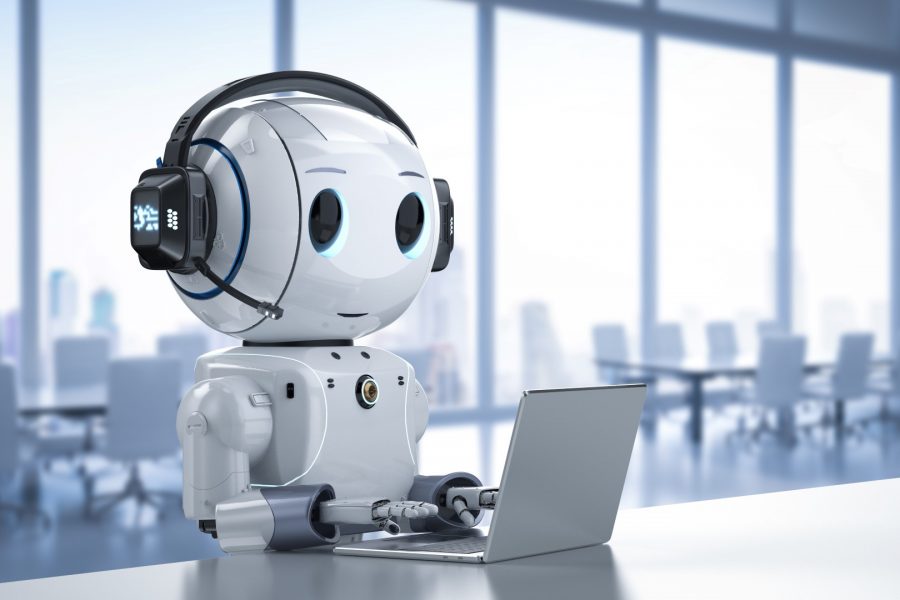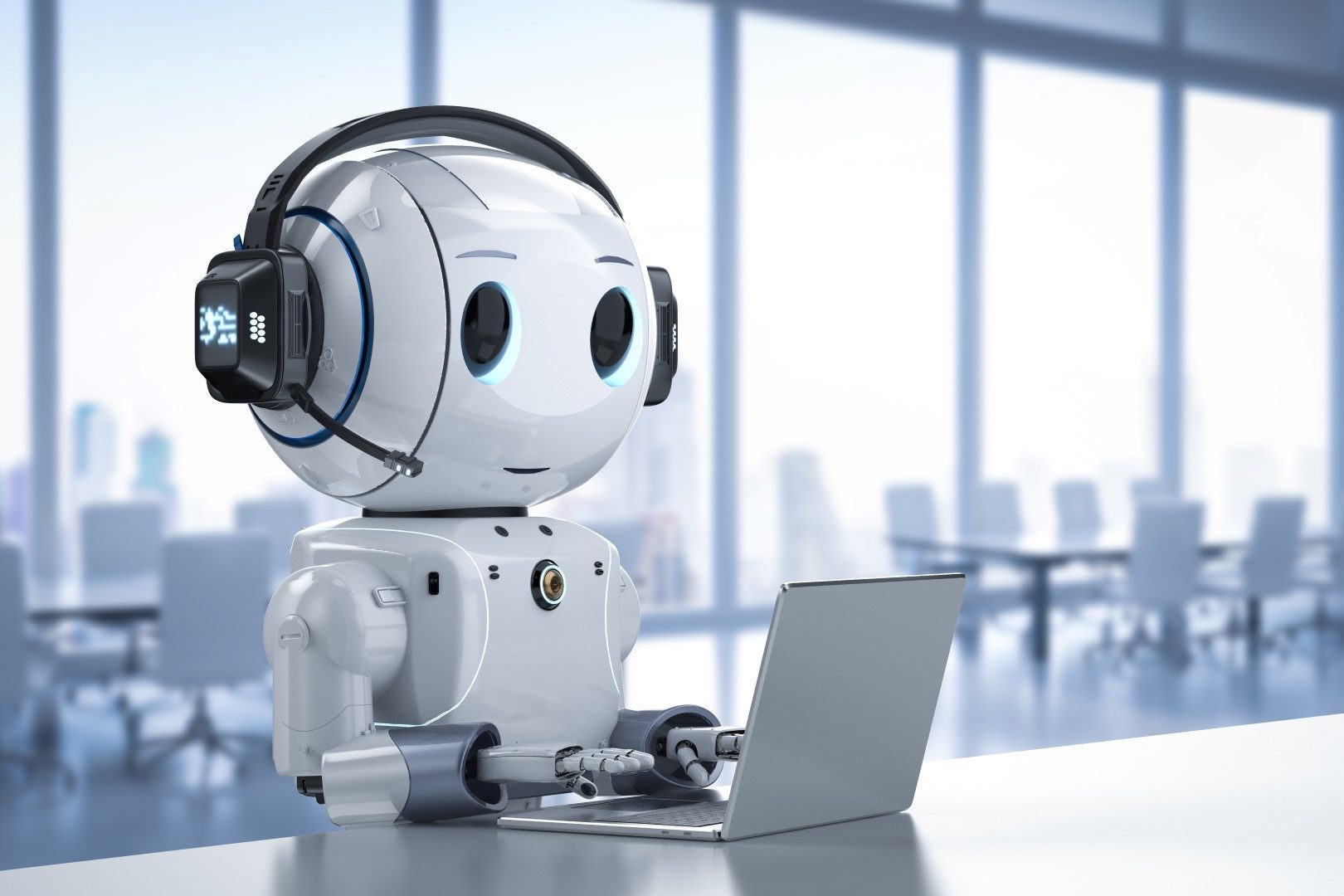
For some years now, Porsche Holding and Porsche Informatik have been increasingly focusing on robotic automation, and bots have become indispensable in many areas. What are bots? And where and how do we use robotics in our organisation?
For a long time, Porsche Bank clerks have had to perform the necessary but extremely monotonous task of requesting transfer links*) – an activity to be performed up to 230 times a day on average. Since May 2020 Porsche Bank colleagues have been spared this motivation killer. The requests are now handled by a bot that we set up for Porsche Bank – just one of numerous robotics use cases in our organisation.
*) The policyholder consents to linking insurance benefit payments to Porsche Bank’s approval.
What is robotics
Robotics is using computer programmes to automate software programmes that would otherwise have to be run by people. These computer programmes are called bots. Bots do the same thing humans do, but much faster and – if necessary – around the clock.
Robotics is ideal for processes that have the following characteristics:
- Monotonous
- Error-prone
- Time-consuming
- Unchanging
- Frequent repetitions
- Long service life
- Work overloads at stressful times, e.g. end-of-month processing
Most of the currently 18 active bots are running at Porsche Bank. But Porsche Inter Auto, Porsche Austria and Porsche Holding also use bots themselves.
Our technical setup
Porsche Informatik uses Automation Anywhere to develop and run bots. Bot Creators are used to develop the bots and Bot Runners run the bots.
The Control Room is where licences are managed, where the bots are scheduled and manually started or stopped, where permissions are managed, etc. Bots run on virtual clients. If bots don’t interfere with each other, several bots can run on one client. The bots perform client actions in the relevant systems.
Most bots have the same basic structure. When bots run in standby mode is defined in the Control Room. A user starts a bot by sending a Trigger Email to a specified email address. The bot sends an email to the user to let them know the bot is starting. Then the bot processes each activity. These can be very diverse and usually involve different systems.
Often Excel lists are created or edited. In some cases websites are opened and queries are executed. Serial letters are created and sent by email. A bot can also enter external systems – e.g. to process traffic fines for car rental companies.
At key points the bot sends the user feedback to let them know which steps have been successfully executed. Simultaneously log files are created, which allows later evaluation and troubleshooting.
When processing is finished, the bot sends a final info mail to the user and goes back into standby mode. If a bot crashes, in many cases a support ticket is automatically created and processed by our Robotics colleagues.
Benefits of robotics
It does not make sense to automate every process. The usefulness of a bot can best be expressed in a formula. This ratio should be as high as possible:

Our “formula” for bot profitability
This means the following parameters
| should be as high as possible: | should be as low as possible: | ||
| SI | Strategic importance | DE | Development effort |
| HCS | Helpful in critical situations | RE | Revision effort (in case of changes) |
| TS | Time savings | MC | Maintenance cost |
| SL | Service life | CR | Criticality |
| RU | Reusability | ||
| SA | Number of systems affected | ||
Bots with a high ratio are more important (and usually more profitable) for the company than bots with a low ratio. However, since not all parameters can be expressed in monetary terms, no direct conclusion can be drawn about the financial savings resulting from a bot. It makes sense to develop bots that pay for themselves – in terms of development effort and saved work – within six months. We have bots running that save over 1,000 hours of work per year.
But these estimates should be treated with caution. Such figures are based on extrapolated estimates of manually performed tasks (inherently fuzzy by nature). And don’t forget that the pure time savings is only ONE parameter. Freeing employees from mindless routine tasks increases motivation and employee satisfaction, and this aspect is not included in the bot profitability calculation.
Blessing or curse?
Robots that automatically perform tasks make some people uncomfortable. People have reservations about robotics. I address the most common reservations here:
- “Bots destroy jobs”
Bots primarily perform dull work, i.e. they free up employees for more interesting tasks. - “Bots are risky because they work automatically in systems.”
Each bot is only as good as its specification and implementation. We take great care to ensure that we get completely “watertight” specifications, and we question them every now and then. - “Bots have to be constantly updated because the GUI is always changing.”
Partly true. But good developers don’t unnecessarily access the GUI. Therefore their bots are much more robust than one might think. - “Bots are very sensitive to system updates.”
Basically, yes – that’s why updates should be planned and tested in advance. - “Bots are high maintenance.”
In principle, yes – the maintenance effort is indeed significantly higher than for “normal” software. At Porsche every error is analysed in detail and enduringly corrected. Consequently, the bots become more robust with every error. - “Bots are not flexible because they only run according to a rigid procedure.”
Correct – and that’s exactly what bots are for. Bots do not fall under AI. Bots are supposed to do exactly what they are programmed to do. Bots are not self-learning systems.
The limits of automation
Even through there are far more potential applications for robotics than one might think, there are of course limits. Bots cannot be used where intelligence is required. A bot will never be able to replace a specialist who has acquired knowledge over the years. But a bot will be able to free up such professionals so they can concentrate on their specialties.


